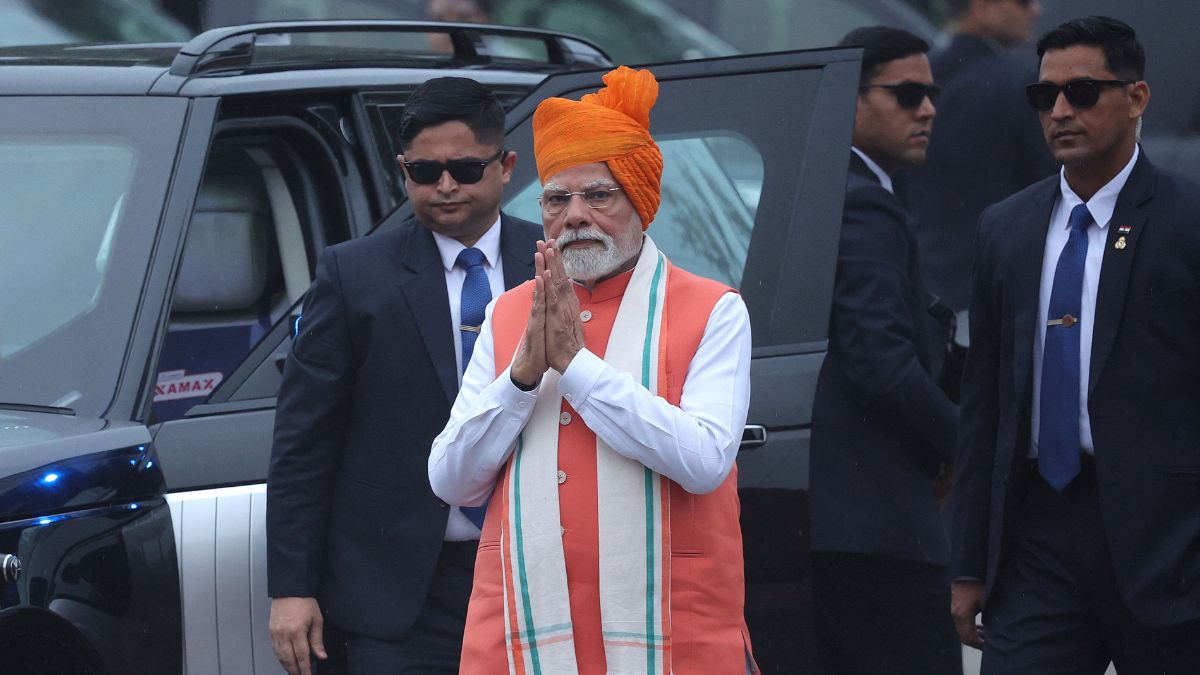Prime Minister Narendra Modi, in his Independence Day speech, said that the goods and services tax (GST) system would be reformed, calling it a festive gift from the Centre.
He said a new tax system with much lower rates will be launched this Diwali.
ALSO READ | ‘India won’t tolerate nuclear blackmail’: Decoding PM Modi’s warning to Pakistan
He also announced that under the ‘Pradhan Mantri Viksit Bharat Rozgar Yojana’, youth joining private sector jobs for the first time will get Rs 15,000 as assistance.
Here’s a look at his two big announcements in the Independence Day address:
Next-gen GST reforms
Prime Minister Narendra Modi said the government will roll out “next-generation GST reforms” by Diwali this year, aimed at reducing the tax load on households and small businesses.
He said the plan will revise tax slabs and cut Goods and Services Tax (GST) rates on essential and daily-use products, describing it as a “massive gift” to the public.
“We are committed to making life easier for the common man. This Diwali, we will bring GST reforms that will lower prices and boost compliance,” he said in his Independence Day address.
Calling the changes part of the government’s wider economic reform plans, PM Modi said the new system will help micro, small and medium enterprises (MSMEs) by making processes simpler and lowering costs.
He added that the goal is to create a tax system that is clear, friendly to businesses, and encourages both growth and spending.
The GST, launched in 2017, has long faced calls from industries and state governments for easier rules and fairer rates. The Prime Minister’s statement is expected to pave the way for talks in the GST Council before the festival period.
Impact Shorts
More ShortsA group of state finance ministers, led by Bihar Deputy Chief Minister Samrat Chaudhary, is reviewing possible GST rate cuts. Another team of state ministers is looking at reducing or removing GST on health and term life insurance products, with a decision expected soon, Moneycontrol reported.
Sources told the publication that one major proposal being considered by the GoM is to remove the 12 per cent GST slab. Items in this category could be shifted to either the 5 per cent or 18 per cent brackets.
At present, GST has five main rates: nil, 5 per cent, 12 per cent, 18 per cent and 28 per cent.
According to the report, the GST Council is likely to decide by October on the future of the compensation cess, as the repayment of the GST compensation loan taken to cover states’ revenue shortfall during the pandemic is expected to be completed ahead of time.
Viksit Bharat Rozgar Yojana
He also announced the “Pradhan Mantri Viksit Bharat Rozgar Yojana” under which those getting their first job in the private sector will receive Rs 15,000 from the Centre.
Speaking from the Red Fort on the 79th Independence Day, he said the Rs 1 lakh crore scheme will start immediately and is expected to benefit over 3.5 crore people.
“Today is August 15, and we are launching a Rs 1 lakh crore scheme for the youth of this country. It is good news for you that PM Viksit Bharat Rozgar Yojana is being rolled out from today,” he said.
Under the scheme, the government will transfer Rs 15,000 directly to young people when they get their first private sector job. Companies that create more jobs will also be given incentives.
Part A: Who is eligible?
Part A targets first-time employees registered with the Employees’ Provident Fund Organisation (EPFO). It will provide one month’s EPF wage, up to Rs 15,000, in two instalments.
Employees earning up to Rs 1 lakh per month will qualify. The first instalment will be paid after six months of service, and the second after 12 months, once the employee completes a financial literacy programme.
Part B: What about employers?
Part B focuses on creating new jobs in all sectors, especially manufacturing. Employers will receive incentives for hiring workers with salaries up to Rs 1 lakh.
The government will give employers up to Rs 3,000 per month for two years for each new employee who stays for at least six months. In manufacturing, these incentives will continue into the third and fourth years as well.
)